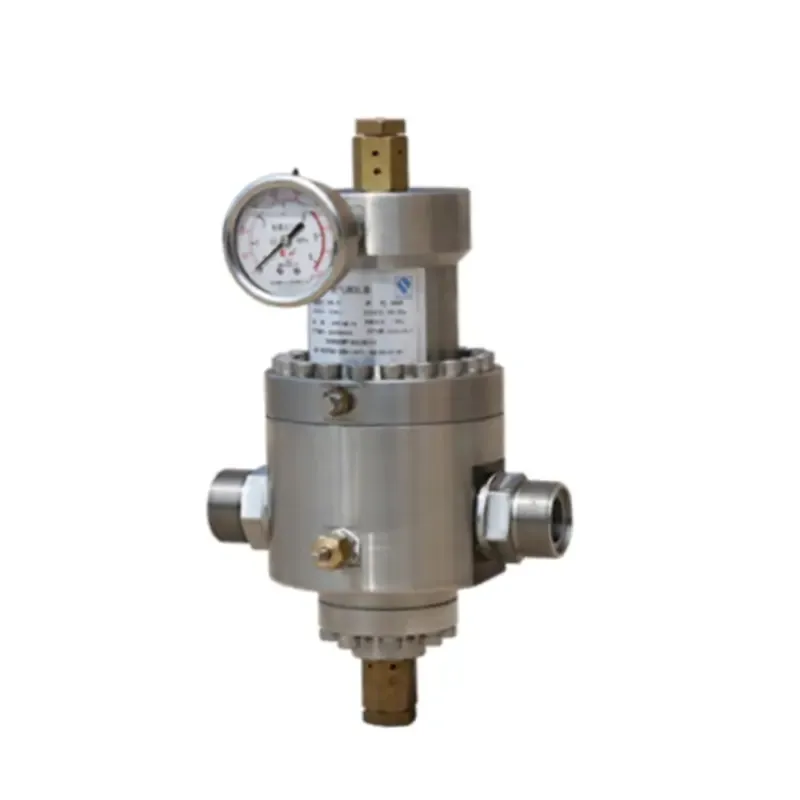
Oct . 11, 2024 04:18
Back to list
high pressure regulators
Understanding High Pressure Regulators Key Components and Applications
High pressure regulators play a critical role in managing the flow and pressure of gases in various industrial and commercial applications. These devices are designed to reduce high inlet pressure to a desired, lower outlet pressure, ensuring safe and efficient gas usage across numerous sectors, including manufacturing, medical, and energy.
How High Pressure Regulators Work
The primary function of a high pressure regulator is to maintain a consistent outlet pressure despite fluctuations in inlet pressure. When gas is supplied at high pressure, the regulator uses a diaphragm mechanism that reacts to changes in pressure. As the inlet pressure rises, the diaphragm moves to throttle the gas flow accordingly, allowing only the desired amount of gas to pass through to the outlet. This ensures that equipment downstream operates safely within its specified pressure limits.
Regulators often feature a built-in relief valve to prevent excessive pressure buildup, protecting both the regulator and downstream equipment from potential damage. The materials used in regulators are typically corrosion-resistant to withstand various gases and environmental conditions, further enhancing their reliability and lifespan.
Applications of High Pressure Regulators
High pressure regulators find use in a multitude of applications where gas supply consistency is critical. In the healthcare sector, for instance, oxygen regulators are used to control the delivery of oxygen to patients who require respiratory assistance. These regulators ensure that the oxygen provided is at a safe and adequate pressure for effective treatment.
high pressure regulators

In the industrial sector, high pressure regulators are essential for processes such as welding, where gases like acetylene and oxygen are commonly used. Regulating these gases is vital for achieving the proper flame characteristics needed for effective welding. Furthermore, these regulators are instrumental in gas distribution systems in various manufacturing processes, ensuring the right pressure for optimal results.
Importance of Maintenance
Regular maintenance of high pressure regulators is crucial to ensure their longevity and performance. Over time, components may wear out, leading to pressure inconsistencies that can affect operations. Routine checks for leaks, proper calibration, and replacing worn parts can prevent operational failures and enhance safety.
Additionally, it is important to use regulators that are appropriately rated for the specific gas and pressure requirements of the application. Using the wrong type of regulator can lead to inefficiencies and risks that may compromise safety and performance.
Conclusion
High pressure regulators are vital components in a variety of gas-handling applications. By effectively managing gas pressure, they contribute to the safety and efficiency of many industrial and healthcare processes. Understanding their operation, applications, and the necessity for regular maintenance ensures that users can maximize their performance and reliability, ultimately leading to safer working environments and enhanced operational efficiencies. As industries continue to evolve, the importance of robust and reliable pressure regulation will only grow.
Latest news
-
Safety Valve Spring-Loaded Design Overpressure ProtectionNewsJul.25,2025
-
Precision Voltage Regulator AC5 Accuracy Grade PerformanceNewsJul.25,2025
-
Natural Gas Pressure Regulating Skid Industrial Pipeline ApplicationsNewsJul.25,2025
-
Natural Gas Filter Stainless Steel Mesh Element DesignNewsJul.25,2025
-
Gas Pressure Regulator Valve Direct-Acting Spring-Loaded DesignNewsJul.25,2025
-
Decompression Equipment Multi-Stage Heat Exchange System DesignNewsJul.25,2025

